
Art has been the longest-lasting constant in 29-year-old Colin Radcliffe’s life, besides his queerness and the support of his parents. Growing up outside Long Island, New York, he came out to his family at 18, but he did it more as an act of love than breaking news. Like many intuitive parents, they already knew but were waiting for him to be ready.
Radcliffe has been creating in one way or another since he was old enough to hold a crayon. He remembers his first masterpiece was a drawing of Eric Carle’s “The Very Hungry Caterpillar,” which his parents hung on the kitchen wall, where it was left for years. At 21, while studying at Bard College, Radcliffe was diagnosed with Ulcerative Colitis. But the chronic disease didn’t discourage him from graduating in 2016 and moving to New York City to cement a space for his art and find his audience.
The artist says when he was young, he didn’t know the terminology to define his identity because he never saw himself represented in the media. Perhaps that’s what led to Radcliffe’s solo exhibition THRIST TRAP this year, where he sculpted the most intimate moments of his life and queer culture and, in turn, reflects the most threatening aspects of homosexuality to conservative media, specifically the naked gay male body, in a manner that’s playful, silly, but still tender. While some people might critique the raunchier side of Radcliffe’s work, gay men see themselves.

QUEERTY: If I understand correctly, these porcelain sculptures imitate moments of your life and the people in it. What goes through your mind when taking a nude photo of yourself?
How about we take this to the next level?
Our newsletter is like a refreshing cocktail (or mocktail) of LGBTQ+ entertainment and pop culture, served up with a side of eye-candy.
RADCLIFFE: It really depends. When taking nudes for myself, I think mostly about aesthetics and making them playful. But, on the other hand, when I’m sexting with someone, I might take a new picture that I know appeals to what turns them on.
What qualities do you think the best thirst traps have?
For me, an effective thirst trap is aesthetically pleasing, fun, sexy, and doesn’t take itself too seriously. Something sexy and revealing, but that doesn’t give everything away. Good lighting is essential, whether it’s well-lit or moody. A suggestive pose, an interesting POV angle or composition, and the photo’s setting really intrigue and plays into people’s curiosities and desires. A thirst trap is a digital method of flirting, so if anything, it should be playful.
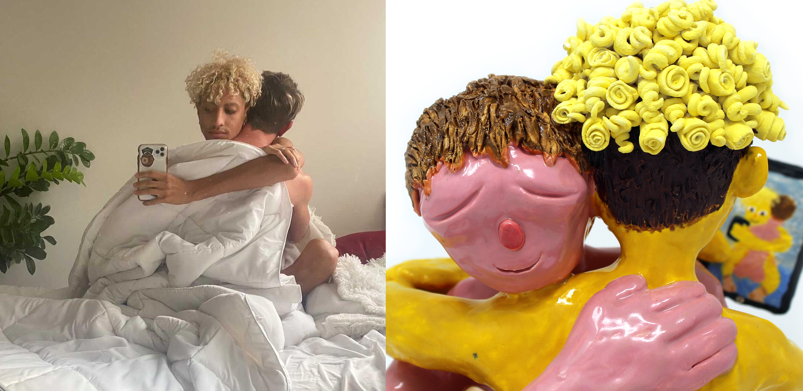
So tell me about what comprises the subject matter.
I make work about myself, friends, or lovers I’ve had or have. Usually, you can recognize someone I’ve had a sustained relationship with because there will be multiple pieces of the same person, typically in the same color scheme and with the same identifying details. Usually, they’re happy, and other times they are more sexual, or if the relationship ended badly, there might be a more negative piece to process that experience. Essentially the work is autobiographical, so any experience or relationship in my life is potential subject matter.
Some of your sculptures, particularly the couples photographing themselves together and the guy getting angles of himself masturbating, immediately reminded me of OnlyFans, which has been such a massive conversation in modern gay culture. Did you think about this when creating your work?
I started making this kind of work years before OnlyFans exploded in popularity, so it’s not something I usually think about when making it. I’m primarily reflecting on and processing my emotions and experiences. That said, I do get asked quite often if I have an OnlyFans or if I’d consider getting one, likely because of the type of work I make.
What is the typical reaction when people see your sculptures?
It depends. Generally, people are drawn in by the color and the playfulness of everything. After they’re pulled in by that, people start to pick up on the more mature adult themes and what’s actually going on in the work. I think queer people can see themselves a lot more easily, so they pick up on the subtleties and references a lot quicker. Overall the reactions are very positive, and the work seems to be accessible to a very wide audience. There’s something there for everyone, both on the surface and a little deeper.
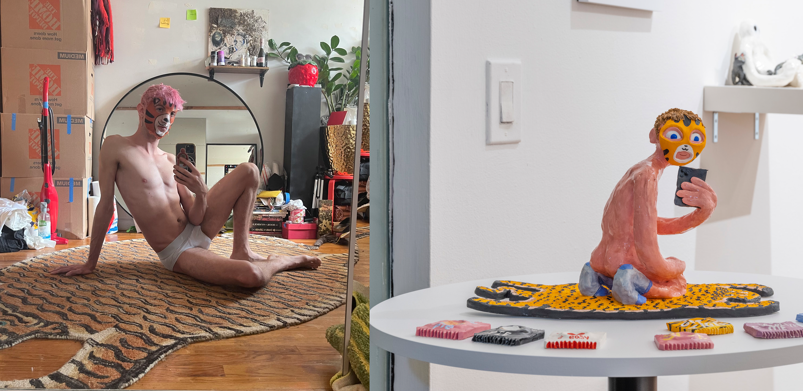
Your exhibit is undoubtedly a safe form of delivering graphic homosexuality in a palatable way to the general public. But at the end of the day, a penis is a penis, whether it’s made of clay, porcelain, or human flesh. Why do you think the real thing is so offensive to people?
That’s a good question. To some extent, I think it’s probably tied to toxic masculinity and the history of masculinity in general. In art and media, women’s nudes have been normalized and celebrated as opposed to male nudity – not so much. Unfortunately, most media is produced to satisfy a straight white male gaze due to straight white men historically being in positions of power. That’s led to a disproportionate representation of female to male nudity, and that under-exposure to male nudity can feel very jarring when you’re exposed to it.
Sexual insecurity is also a major factor. People naturally feel threatened by anyone they think can outcompete them, so seeing someone who is more sexually available, more desirable, has a larger or more aesthetically pleasing dick, a hotter body, or is more visibly comfortable with their sexuality can make someone seem like competition or a threat. There’s also this cultural obsession with size; the bigger, the better, so there’s some fear of another man having a more impressive package and being more desirable than you. Ultimately it comes down to systemic issues of the visibility and representation of male nudity, a culture of toxic masculinity, and collective sexual insecurity.
Boobs have for sure been a staple in culture. So how were you introduced to gay sex?
I think through the internet!
Were you googling?
Not even, I think it was a popup initially, and that was like my sexual awakening. I was a pretty naive and innocent kid, but then, you know, you do research after that, start to google things. You stare a little longer at pictures in the underwear aisle…
Retail stores got steamy real quick! Ironically, leaked nudes are many straight people’s worst nightmare, yet most gay men have a gallery ready to be spammed out to potential lovers. Do you think our community’s ownership of sexuality – liberated from shame – is what scares people rather than genitalia?
Queer sexual liberation is scary to many people because it’s straightforward and out in the open. That forces people to confront their own relationship with sexuality, which can make people feel ashamed of their own lack of sexual freedom or expression. It’s much easier to attach your anger to someone else or even a group of people than to put in the time and work to become more self-accepting and loving. Bodies aren’t inherently scary, but vulnerability sure is, so I feel that our community’s ownership and mastery of our sexuality is far more threatening than what’s between our legs.

There’s an intimacy to your work that we don’t often experience in gay culture. Do you think the number of partners can affect the quality of the connection?
Generally, no, but it’s dependent on many things—how many partners do you have at a given time? What is your comfort level with monogamy vs. other types of relationships? What is your relationship with intimacy and vulnerability? Are you and your partner both emotionally available? What kind of connection or relationship are you both looking for? For me, vulnerability, honesty, reciprocity, communication, consistency, and commitment are the greatest determinants of the quality of a connection. If you feel safe, authentic, and comfortable with someone, that’s a pretty good sign that the connection is healthy.
Aside from the limitless financial opportunity that’s not typically possible through other means, why do you think gay men have been so drawn to producing graphic content of themselves? Gay men filming themselves having sex is almost a fetish of its own.
To some degree, I’d say it’s because of this misguided belief that gay people are inherently more sexual. We’re not, but we are definitely more liberated. So that societal idea or expectation of what gay people are supposed to be like, I think, puts pressure on gay people to behave how they might be expected to act by the culture at large. We all grow up with this idea, internalize it, and then to varying degrees, reject or embrace that imposed identity as we age. But I also feel that it’s a reclaiming of the gay narrative in a way, taking ownership of this idea and then benefiting from it. It’s not too unlike the word “queer,” which for a long time was an offensive slur but has since been reclaimed as a broadly inclusive and empowering term. It’s also very empowering to control your self-image, and producing graphic content of yourself is a compelling way to do that.
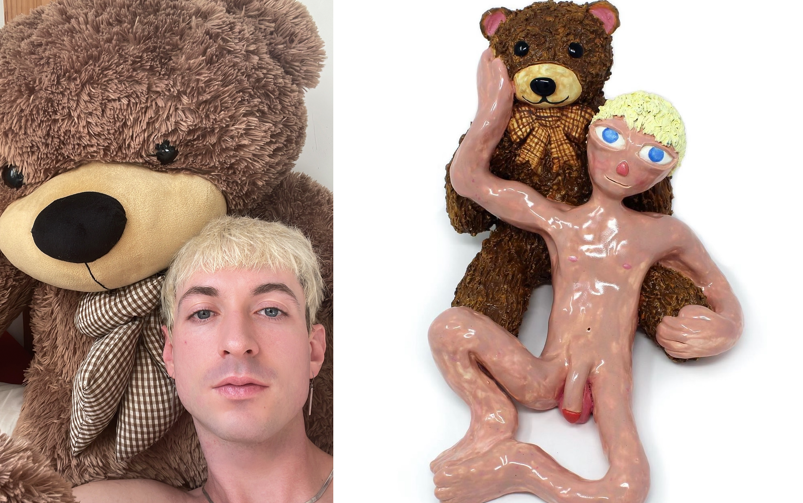
Can we expect your sculptures to get raunchier?
Definitely! I’m focusing on creating work that’s more honest and vulnerable, so expect to see raunchier and more “NSFW” sculptures but also pieces that are more confessional, more intimate, and more intense in feeling like love, heartbreak, loneliness, infatuation, and desire. So I would say you can expect to see the whole spectrum of the contemporary Queer dating experience.
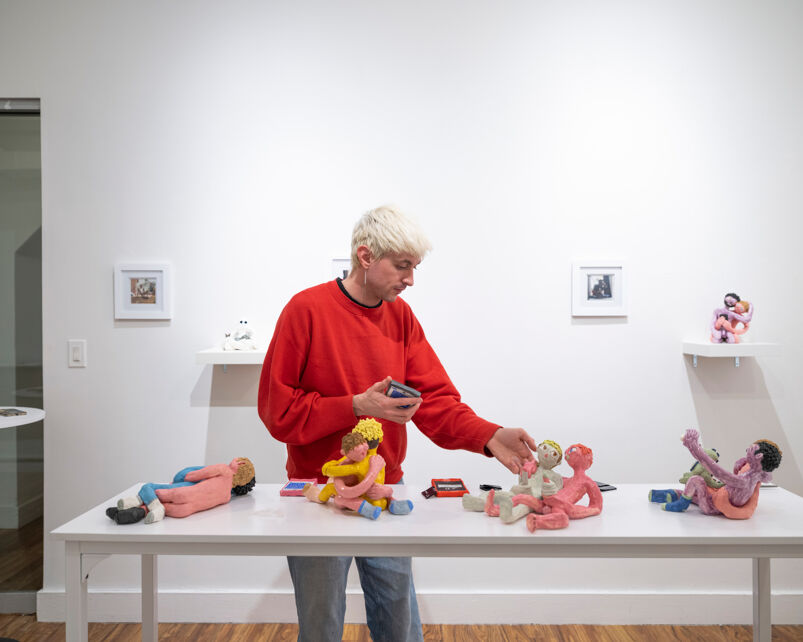













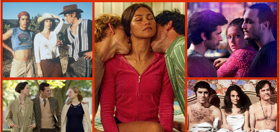




correctio
“transpired the most threatening aspects of homosexuality to conservative media”
methinks you want a different verb here?
dbmcvey
Very funny.
zephyr69
These are excellent. Can you buy them?
eeebee333
The sculptures have a real sense of fun.
FreddieW
I’m a big fan of male nude art and have it hanging on my walls. But yes, this is raunchy and not something I’d want a visitor to encounter in my home.
Paraphrasing Nina Garcia: “It’s about taste.”
abfab
Well, there’s no accounting for taste.
abfab
Marvelous! He should play Show and Tell with these creations. In grades K-12………..IN FLORIDA!!!!! The DAVID has nuthin on these play figures.
Reminds me of Pee Wee’s Playhouse. : )
abfab
”Penny”!
barryaksarben
I love these and I would have zero trouble having one of his works in my house. My family is cool and it is just male nudity. I guess he3 is touching himself but whatever
abfab
I love it too. Don’t we all touch ourselves? I want one too!!!!
bachy
They bring Gumby to mind – if Gumby had a rockin’ sex life.
abfab
Penny
Gay Thomas
I had a straight friend who was an artist who incorporated a lot of penis imagery in his works. He would have absolutely adored Colin. Eric passed earlier this month from a fentanyl OD. I hope you’ve conquered your demons, Eric, my friend. Rest in Peace.
Such inspiring, funny art, Colin! And anything to make conservatives rage is fine by me.
Den
I’m kind of confused by the statement that the artist grew up “outside Long Island”. The only things outside Long Island are the Long Island Sound, the Atlantic Ocean, and a few other islands (like Manhattan). Everything else is the mainland of the US.